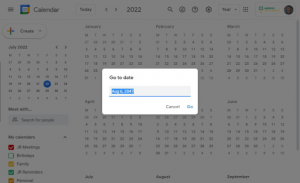 In my many conversations with fellow sales leaders all over the world, I like to ask them a simple question: What is your plan for winning?
In my many conversations with fellow sales leaders all over the world, I like to ask them a simple question: What is your plan for winning?
As expected, the responses are as varied as the people who give them. It’s very interesting how their answers give me a glimpse into the kind of sales leaders they are and the organizations they operate in. But what I find truly fascinating is the fact that sales leaders from the better performing B2B companies seem to have a common plan for winning — to focus on the customer. This is also what emerged from the results of the Sales Best Practices Study. For four consecutive years in the study we’ve asked respondents to rate themselves on the following statement: We clearly understand our customer’s issues before we propose a solution. Our running average the last four years is 92 percent for World Class Sales Performers against 45 percent of all respondents.
What this tells me is that the winningest organizations have unlocked the secret: to put the customer at the core. At MHI Global, we take this a notch higher. We call it perspective selling. It’s really a basic practice that’s often overlooked: Provide perspective that’s relevant to the customer. It’s the same advice we give our clients who are serious about winning.
You’ve probably heard me time and again that the sales profession is more than just about taking the orders; and a true commitment to the customer means going beyond the sales and focusing on the results the client is trying to achieve. After getting a clear understanding of the customers’ concepts of what they’re trying to fix, accomplish or avoid, the best sales professionals take that base information, analyze the challenges, and share important perspectives and information before offering solutions that are aligned to the customer’s desired outcomes and concepts. True customer-focused sales professionals apply the lessons and experiences they have learned from other successful engagements. In the same manner, they’re not afraid to speak with candor when the customer’s solution idea may not be the best option based on the failures the sales professional has seen in other organizations in similar situations.
Now you’re thinking, “OK Sam, I get the concept behind perspective selling, but how do I get my team to do it?”
Two words for you: Empower and Collaborate.
Empower every individual in your team to become problem solvers. Encourage them to challenge current mindsets and to think outside the little box called “closing the sale.” Inspire them to think bolder, that maybe there is a better solution that’s better than what is obvious right now. Most of all, train them to speak their mind in a way that is tactful so that they can have rich and stimulating conversations with their customers and prospects that help build their credibility as advisors.
Next, collaborate within the organization and among different units. Many minds are better than one. When multiple ideas and information are exchanged, every individual in that conversation is better informed than before they came to the meeting. New salespeople learn from the veterans and vice versa. Sales teams discover new knowledge from the support team who fields customer complaints and provides after-sales service. All that knowledge adds to the experience and expertise of every member who in turn shares that with their customers as value-added perspective.
Business Articles | Business 2 Community
(308)
Report Post








